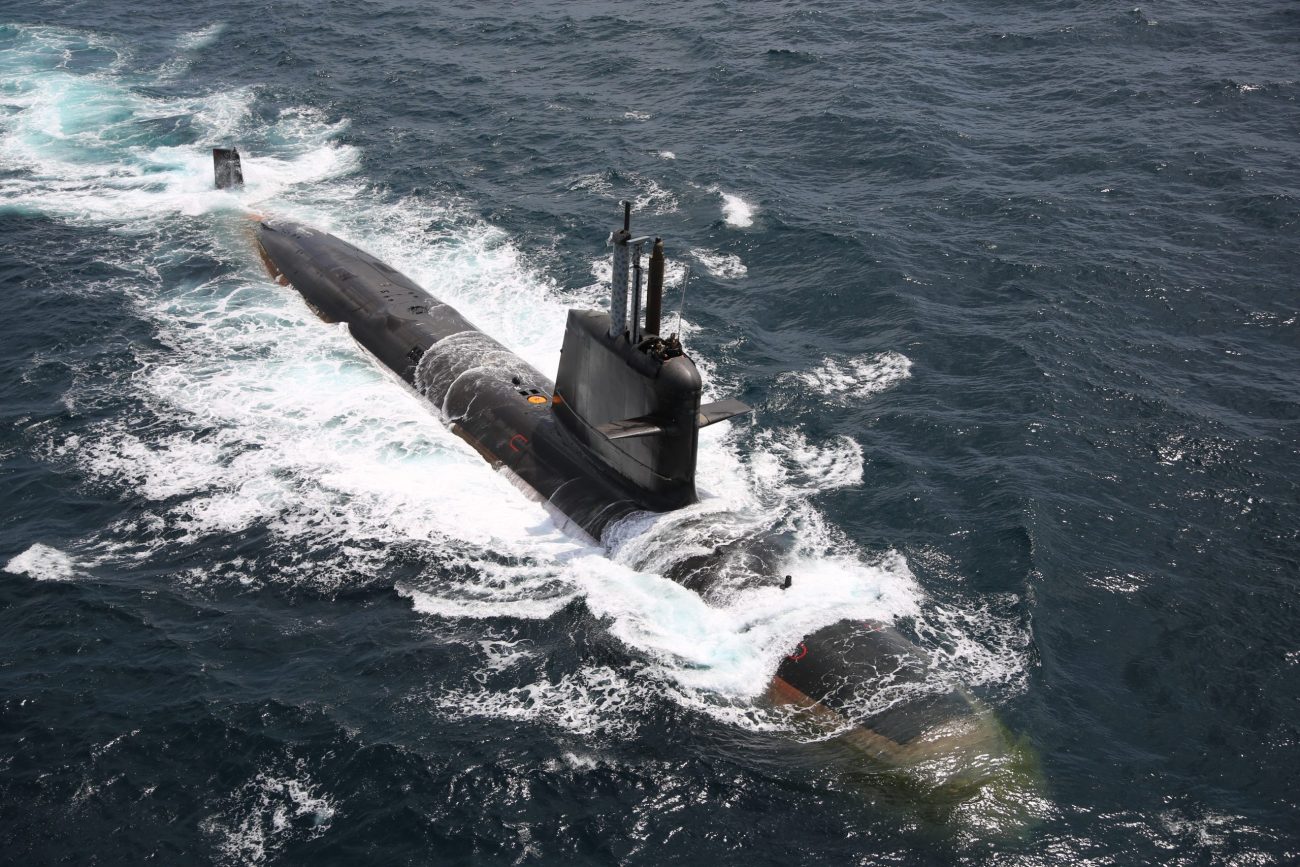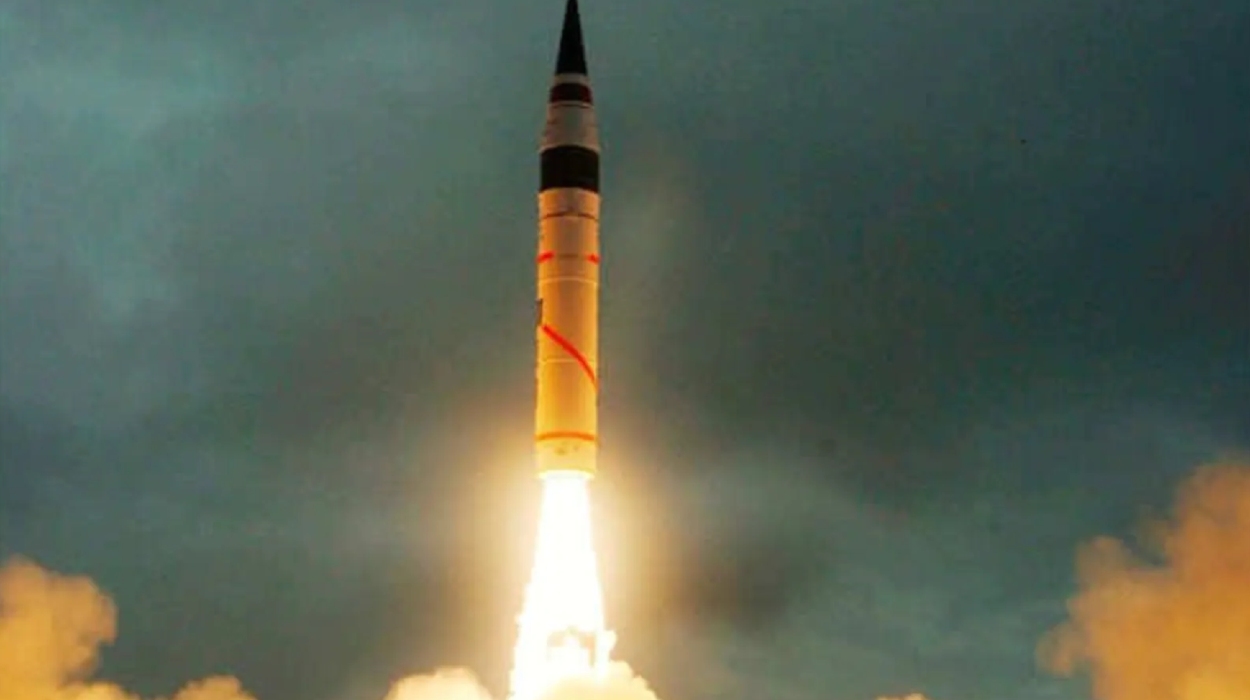Yoga Pics Leak India’s Nuclear Secrets! Navy’s Ship-Launched Nuke Missiles Retired As Submarines Take Lead – FAS

Information gleaned from the photographs of yoga on board Indian Navy warships indicates a change in the nuclear posture. With India inching closer toward the sea leg of its atomic deterrence by acquiring the capability of submarine-launched nuclear-tipped missiles, it has quietly retired its oldest naval nuclear-capable missiles.
The conclusion was arrived at after analyzing social media posts and satellite imagery from recent years. Without a Nuclear-powered Ballistic submarine (SSBN) and submarine-launched Ballistic Missiles (SLBMs), India’s naval nuclear deterrence consisted of two offshore patrol vessels configured to launch nuclear-capable Dhanush missiles.
The Dhanush missile is an Indian short-range, ship-launched ballistic missile (ShLBM). It is the third variant of the Prithvi missile family, which includes the Prithvi I, Prithvi II, and the Prithvi Air Defense interceptor. The Dhanush missile is single-stage and liquid-propelled and can carry both nuclear and conventional payloads.
In 2013, the domestically built surface-to-surface missile was successfully test-fired from the Bay of Bengal. The warships equipped with Dhanush were deployed on two Sukanya-class offshore patrol vessels, INS Subhadra (hull number P51) and INS Suvarna (P52).
In case of conflict, these warships would need to go perilously close to Chinese or Pakistani shores to launch a nuclear attack. But this would make them highly vulnerable to attacks by the adversary. Also, being liquid-fuelled meant that the missile would be fuelled just before the launch.
AfriPrime App link: FREE to download...
https://www.amazon.com/Africircle-AfriPrime/dp/B0D2M3F2JT
An analysis by the Federations of American Scientists points out that these two vessels were different from India’s four other Sukanya-class patrol vessels by the presence of “missile stabilizer platforms on their aft decks” that could be seen through satellite imagery taken in April 2018. The aft deck had since been repainted with a new cross pattern with a circle––likely to be used as a helipad.
“Clarity arrived through a strange medium: a series of yoga-related Instagram posts published by India’s public broadcaster during port visits to Seychelles in October 2022, indicating that the vessel with the new deck markings was indeed INS Suvarna. This meant that as of December 2021 at the latest, the missile stabilizers on INS Suvarna had been removed, meaning that the vessel has since been unable to launch nuclear-capable Dhanush ballistic missiles,” the FAS analysis concludes.
The Indian missile expert said that the retirement of Dhanush was inevitable and indicates India is getting closer to activating nuclear deterrence by having a submarine-launched nuclear weapons launch capability. One of the big challenges in the sea leg of nuclear deterrence is that an underwater vertical launch system is among the most sophisticated and complex weapons since it demands stability, speed, and accuracy in two mediums—water and atmosphere.
“This was what was bound to happen. Dhanush, a naval variant of Prithvi, was a technology demonstrator. India is moving towards longer-range submarine-launched nuclear-capable missiles. Longer range means more scope for survivability with submarines not required to be close to enemy targets,” Indian scholar on nuclear missiles, missile defense, and artillery Debalina Ghoshal and author of ‘Role of Ballistic and Cruise Missiles in International Security told the EurAsian Times.
Making Indian Nuclear Deterrence Credible
In case of a nuclear conflict, the highest level of survivability lies with equipping nuclear-powered submarines with ballistic missiles with sufficient ranges. Since the submarine-launched ballistic missile first came into being, it has been considered the most survivable delivery system, as ocean depths remain opaque to a large extent.
India has a ‘no first use’ policy when it comes to nuclear weapons. A country needs the invulnerable second-strike capability that SSBNs give. In that sense, INS Arihant is a technology demonstrator.
The Indian Project to build a credible nuclear deterrence has been shrouded in secrecy since its inception. As India realized its goal to operate an SSBN with Russian aid, it gained experience operating a nuclear-powered submarine leased from Russia.
“Now that SLBMs on SSBN or SSN (- powered submarine) will become a reality, why depend on surface ships for nuclear deterrence and make it tactical,” Ghoshal adds.
To make the sub-surface arm of India’s nuclear triad pack more punch, India has been working on getting more SSBNs and SLBMs with greater range.
AfriPrime App link: FREE to download...
https://www.amazon.com/Africircle-AfriPrime/dp/B0D2M3F2JT
The first two SSBNs, the Arihant and the Arighat, were deficient in this respect as they only carried the relatively short-range K-15 submarine-launched ballistic missiles (SLBMs), though they can reportedly also accommodate four K-4 longer-range missiles. The K-15 has a range of only 750 kilometers, which is insufficient to target China from the Bay of Bengal.
In 2023, India tested its nuclear-capable K-4 submarine-launched ballistic missile with a strike range of 3,500 km twice a week. The missile was test-fired from an undersea platform in the shape of a submersible pontoon off the coast of Andhra Pradesh. The test demonstrated the missile’s capability to emerge from underwater and undertake its parabolic trajectory.
Once the K-4 missiles are inducted, they will help India bridge the gap with China, which has SLBMs with a range of over 5,000 kilometers. The K-4 missiles will be followed by the K-5 and K-6 missiles in the 5,000-6,000 km range.
Operationalizing Nuclear Deterrence
INS Arihant, the first indigenous SSBN, was launched in 2009 and commissioned in 2016. In November 2019, INS Arihant completed its first deterrence patrol. The Indian government announced the establishment of the country’s “survivable nuclear triad”—the capability to launch nuclear strikes from land, air, and sea platforms.
INS Arihant is a technology demonstrator and an achievement for the Indian indigenization program. When the ATV was involved in an accident in 2017, India had no nuclear triad.
The lack of at least three operational submarines means that the submarines are primarily in and out of the harbor without maintaining constant nuclear deterrence. So far, India had two nuclear-powered ballistic submarines (SSBNs) dubbed Advanced Technology Vessels (ATV). The first of these two is S2 (INS Arihant) and S3 (INS Arighat).

INS Arighat Ready For Induction.
With an eye on China, the only country in India’s neighborhood to have SSBNs, New Delhi launched the third indigenous nuclear-powered attack submarine (SSBN) S4 in 2021.
Satellite imagery taken at the outer dry deck of the secretive Ship Building Centre (SCB) in Visakhapatnam shows S-4 (the third Arihant-class SSBN) along with two of its predecessors.
The Launch tubes are visible in the image. The submarine will be able to carry twice the number of submarine-launched ballistic missiles than the previous iteration of the Arihant class submarines.
The S-4 submarine is expected to have K-4 submarine-launched ballistic missiles with a 3500-kilometer range, and the S4 and S4* are expected to be fitted with K-4 missiles. The need for long-range submarine-launched missiles corresponds to the increasing tensions in the Indo-Pacific region.
India’s Missile Program
In what could be termed as adopting a more flexible deterrence vis-à-vis its two aggressive nuclear-powered countries – China and Pakistan – India on March 11 successfully test-fired a long-range ballistic missile Agni-V with Multiple Independently Targetable Re-entry Vehicle (MIRV) technology.

In one swoop, India entered the exclusive group of countries with MIRV technology, which would complicate China’s existing defensive strategies. MIRVs allow a missile to carry multiple nuclear warheads, each independently targeted to different locations. These warheads can be released at varying speeds and directions, significantly enhancing a missile’s effectiveness.
MIRVs can penetrate ballistic missile defenses by overwhelming the defense system of the adversaries trying to intercept the multiple warheads. A MIRVed missile would be armed with multiple warheads, allowing a single missile to hit several different targets at once or hit a single target with multiple warheads. Such an arrangement would also make MIRVs harder to intercept with anti-missile technology.
MIRV is a complex technology that requires a combination of large missiles, small warheads, accurate guidance, and a mechanism for releasing warheads sequentially during flight. The use of MIRVed missiles on submarines increases their survivability manifold as it is difficult to find nuclear submarines.
AfriPrime App link: FREE to download...
- Questions and Answers
- Opinion
- Story/Motivational/Inspiring
- Technology
- Art
- Causes
- Crafts
- Dance
- Drinks
- Film/Movie
- Fitness
- Food
- Oyunlar
- Gardening
- Health
- Home
- Literature
- Music
- Networking
- Other
- Party
- Religion
- Shopping
- Sports
- Theater
- Wellness
- News
- Culture
- War machines and policy

